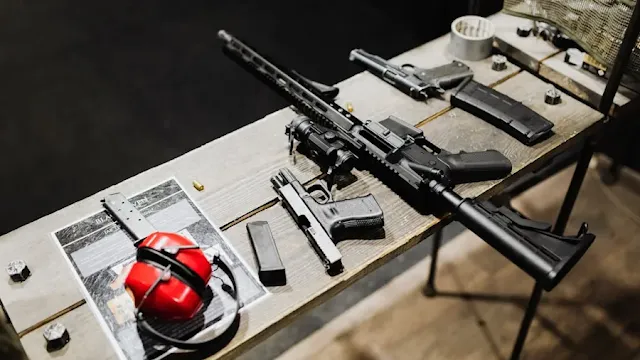Table of Contents
India’s thriving economy and growing consumer market make it a hub for importing used electronics like smartphones, laptops, and LED TVs. Navigating the customs duty framework can be complex due to varying rates and regulations. This guide clarifies the customs duty on used electronics, whether you can send them to India, duty-free allowances, and specific duties for used LED TVs. Learn how to comply with India’s Central Board of Indirect Taxes and Customs (CBIC) rules for a seamless import process. 📱💻✨
What Are Used Electronics?
Used electronics are previously owned and operated devices, including smartphones, tablets, laptops, televisions, gaming consoles, cameras, and office equipment like printers. These items may originate from trade-ins, returns, refurbishments, or direct sales by prior owners. Their condition ranges from “like new” to “for parts,” with value determined by age, brand, condition, and market demand. Importing used electronics offers cost savings and reduces e-waste but requires careful attention to customs regulations.
Understanding Customs Duty in India
Customs duty is a tax levied on goods imported or exported across India’s borders, governed by the Customs Act, 1962, and managed by the Central Board of Indirect Taxes and Customs (CBIC). It regulates trade, protects domestic industries, and generates revenue. For used electronics, duties are based on the item’s Harmonized System (HS) code, value, condition, and origin, with additional taxes like Integrated Goods and Services Tax (IGST) and Social Welfare Surcharge (SWS).
Customs Duty on Used Electronics
Used electronics are subject to customs duty in India, with rates varying by HS code, condition, and assessed value. According to the CBIC, typical duties include:
- Basic Customs Duty (BCD): 10-35% of the assessed value.
- Integrated Goods and Services Tax (IGST): 18-28% on the sum of assessed value and BCD.
- Social Welfare Surcharge (SWS): 10% of aggregate customs duties (excluding IGST).
The assessed value accounts for depreciation, technological relevance, and market impact. Older items may attract lower duties. Use the ICEGATE duty calculator for estimates, though final duties depend on customs officers’ assessments.
Can You Send Used Electronics to India?
Yes, you can send used electronics to India, but they are subject to customs duties and regulations. Key considerations include:
- Prohibited Items: Drones and electronic cigarettes are banned. Check the CBIC prohibited items list.
- Accompanied Baggage: Used electronics are allowed under Transfer of Residence rules, offering exemptions for returning residents with documentation.
- Gifts: Used electronics valued over ₹5,000 incur duties (BCD 35%, IGST 28%, SWS 10%).
- Shipping Compliance: Use the e-SANCHIT platform for document submission. Avoid undervaluing items to prevent penalties or seizure.
Verify airline baggage policies for size and weight limits, especially for larger electronics.
How Much Electronics Can I Take to India Without Duty?
Under India’s Baggage Rules, 2016, a ₹50,000 duty-free allowance applies to personal effects, excluding flat-panel televisions. For used electronics:
- Personal Use: One laptop per passenger (over 18) is duty-free if carried as accompanied baggage.
- Other Electronics: Items within the ₹50,000 allowance may be duty-free if deemed personal effects, but multiple or high-value gadgets may incur duties.
- Transfer of Residence: Returning residents may qualify for exemptions on household goods, including some electronics, with documentation.
Declare all electronics at customs to avoid penalties. Review the CBIC Baggage Rules for specifics.
How Much Customs Duty for Used LED TV in India?
The customs duty on used LED TVs is 38.5% of the assessed value, per CBIC guidelines, including:
- Basic Customs Duty (BCD): 35%.
- Social Welfare Surcharge (SWS): 10% of BCD.
- Integrated Goods and Services Tax (IGST): 28% on the sum of assessed value and BCD.
For a used 42-inch LED TV purchased for ₹50,000 but assessed at ₹30,000, the duty would be approximately ₹11,550. The ₹50,000 allowance does not apply to TVs. Use the ICEGATE calculator and declare the TV at customs.
Key Factors Influencing Customs Duty
Several factors affect customs duty on used electronics:
- HS Code: Classifies the item and sets the duty rate.
- Assessed Value: Based on condition, age, and market trends.
- Condition and Age: Older items may have lower duties due to depreciation.
- Country of Origin: Trade agreements (e.g., with Japan) may reduce duties.
- Additional Taxes: IGST (18-28%) and SWS (10%) increase total costs.
Consult the ICEGATE portal for accurate calculations.
Frequently Asked Questions
What is the customs duty on used electronics in India?
Customs duty includes Basic Customs Duty (10-35%), IGST (18-28%), and SWS (10% of BCD), based on the item’s assessed value and HS code.
Can you send used electronics to India?
Yes, but they face duties and regulations. Prohibited items like drones are banned, and gifts over ₹5,000 incur duties. Use e-SANCHIT for documentation.
How much electronics can I take to India without duty?
One laptop per passenger is duty-free for personal use. Other electronics may qualify under the ₹50,000 allowance, but TVs are excluded.
How much is the customs duty for a used LED TV in India?
The duty is 38.5% of the assessed value (BCD 35%, SWS 10%, IGST 28%). A TV assessed at ₹30,000 incurs about ₹11,550.
Navigating India’s customs duties on used electronics requires understanding rates, exemptions, and compliance. Check CBIC for official guidelines to ensure a hassle-free import experience!
























